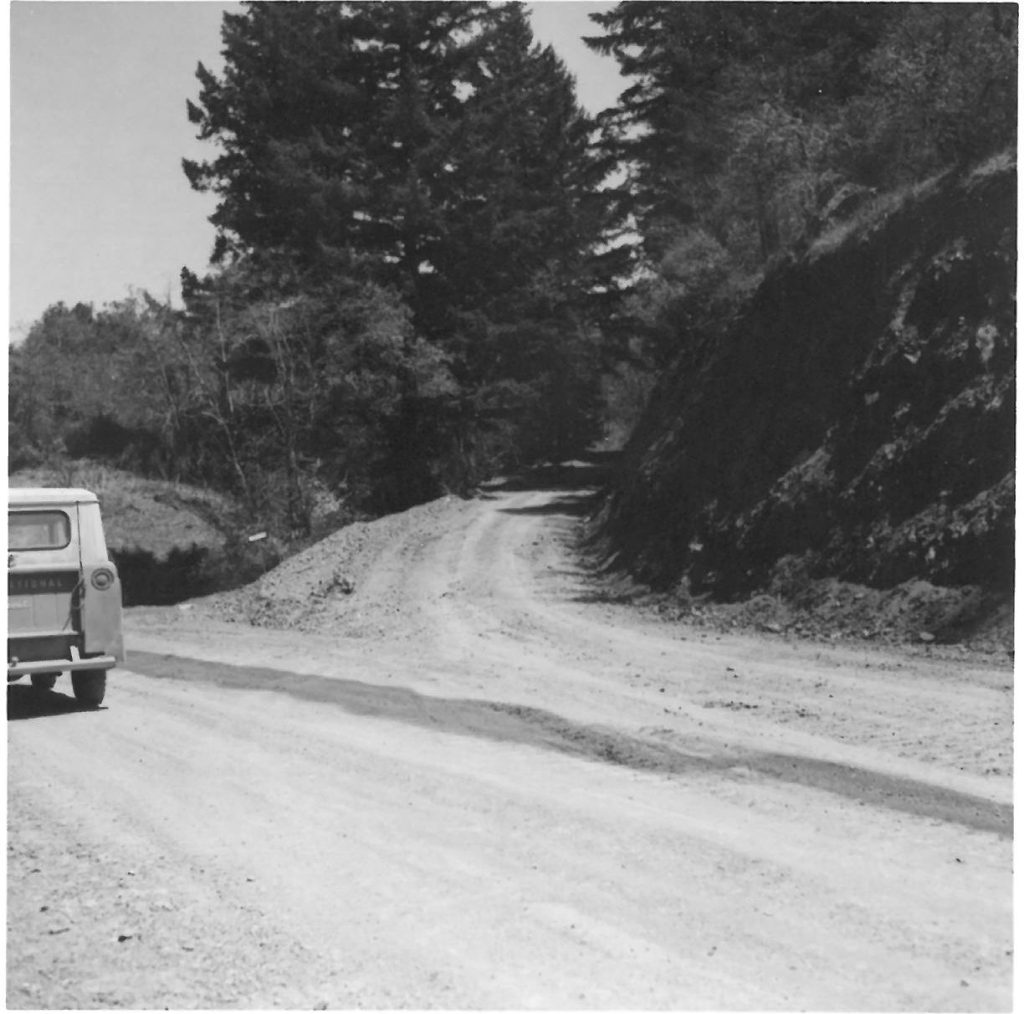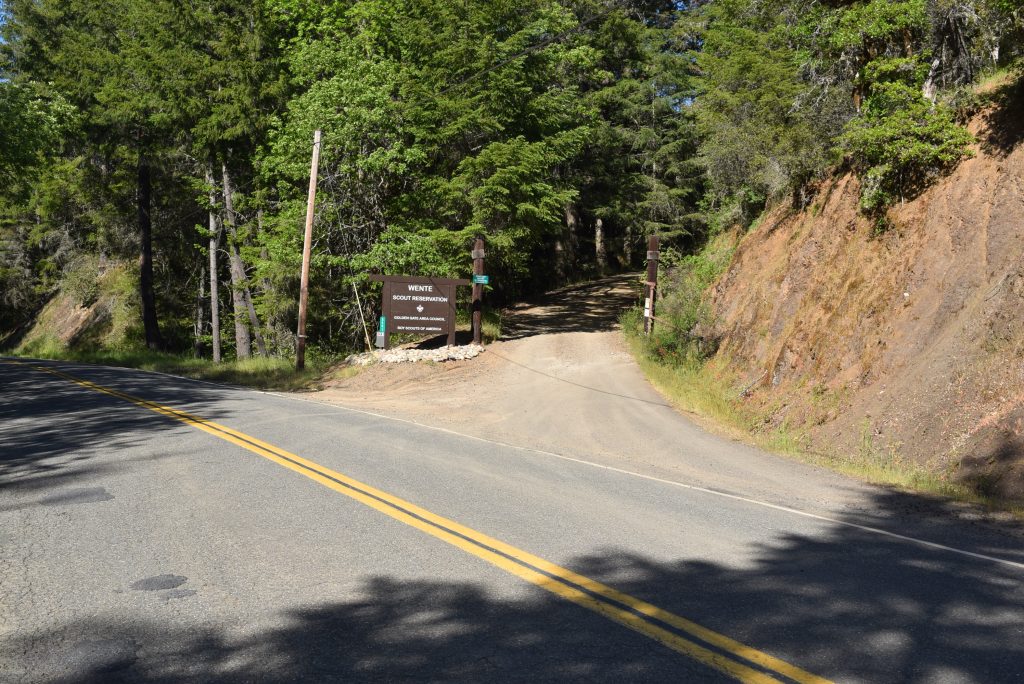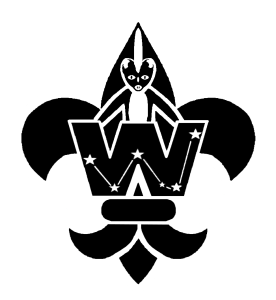
Historical Sites Around Camp
Ranch Bunkhouse – 19?? to 1978:
The bunkhouse was one of the original structures located in Finney Valley prior the Boy Scouts owning the property and was located at the end of the auxiliary parking lot. The bunkhouse was used by the Ohmolt Lumber Company during the 1940’S when the property was full of logging. The bunkhouse and the hay barn behind it dated back to the turn of the century when a pioneer family lived here. An article from the Willits News from 1911 indicated that Harry Webster Ford was born in Finney Valley to a pioneer family (The first known birth on camp property). When the Scouts took ownership of the property in 1959, the ranch house was used for sleeping and cooking. In fact from 1959 until 1971, the bunkhouse was used by staff for all their meals. The bunkhouse was torn down in 1978 due to its deteriorating condition. Only the power pole located directly next to the bunkhouse still stands as a reminder to when loggers, pioneers and scouts used the building.
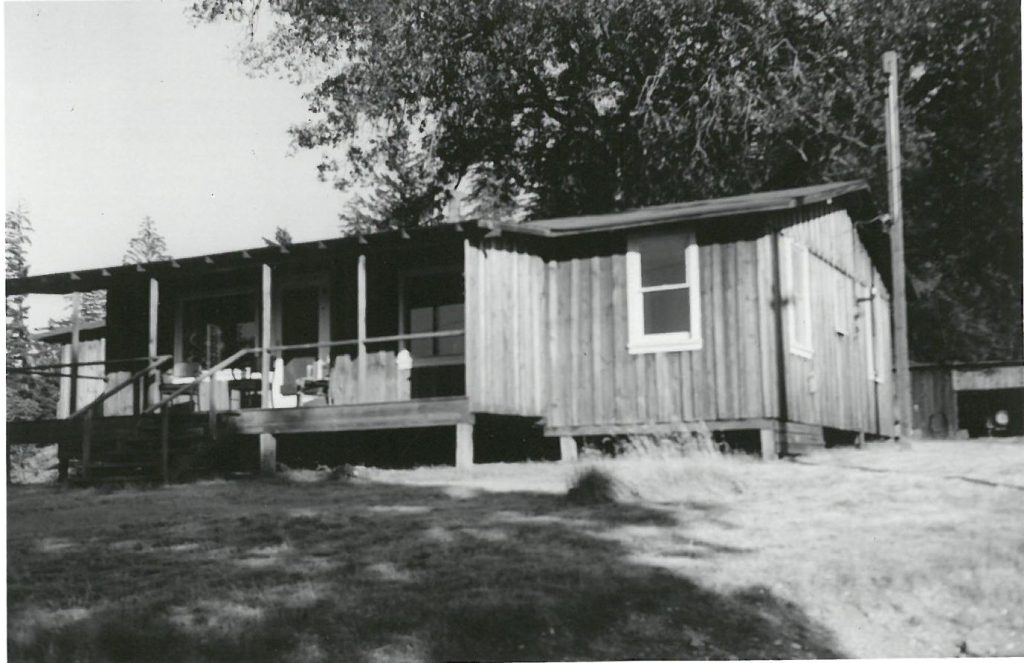
Rangers House – 19?? to 2002:
The Davis Memorial Chapel was constructed in 1963 in memory of xxx Davis and was located on the hill across from the campfire area. Religious services as well as trainings and merit badges were held at the chapel until 1999 when the old chapel was torn down and the new chapel at the peninsula constructed in 2000. Today only the foundation and rock wall still remain of the chapel.
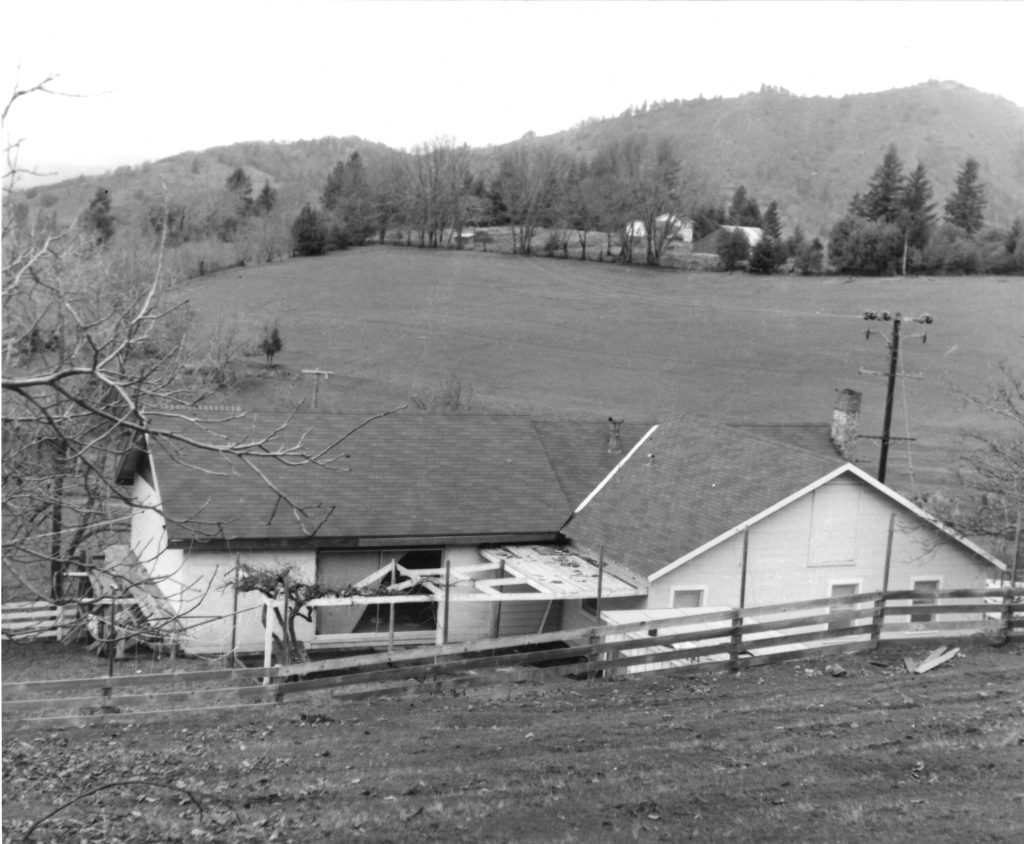
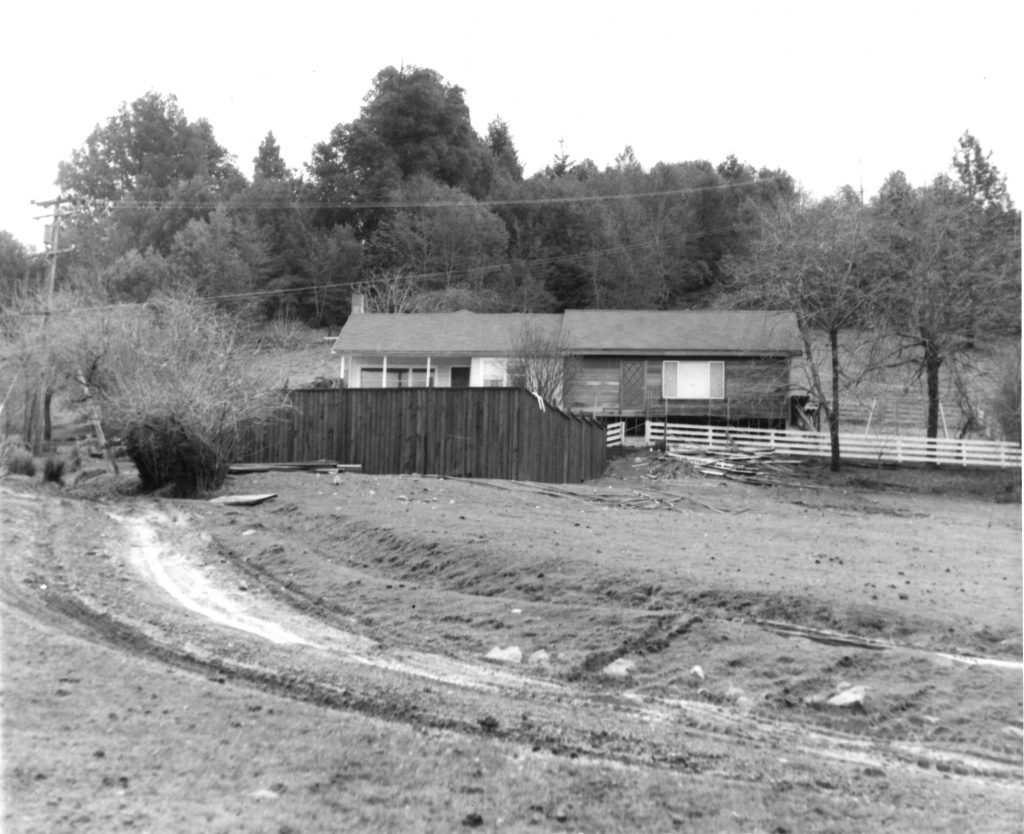
Davis Memorial Chapel – 1963 to 2000:
The Davis Memorial Chapel was constructed in 1963 in memory of xxx Davis and was located on the hill across from the campfire area. Religious services as well as trainings and merit badges were held at the chapel until 1999 when the old chapel was torn down and the new chapel at the peninsula constructed in 2000. Today only the foundation and rock wall still remain of the chapel.
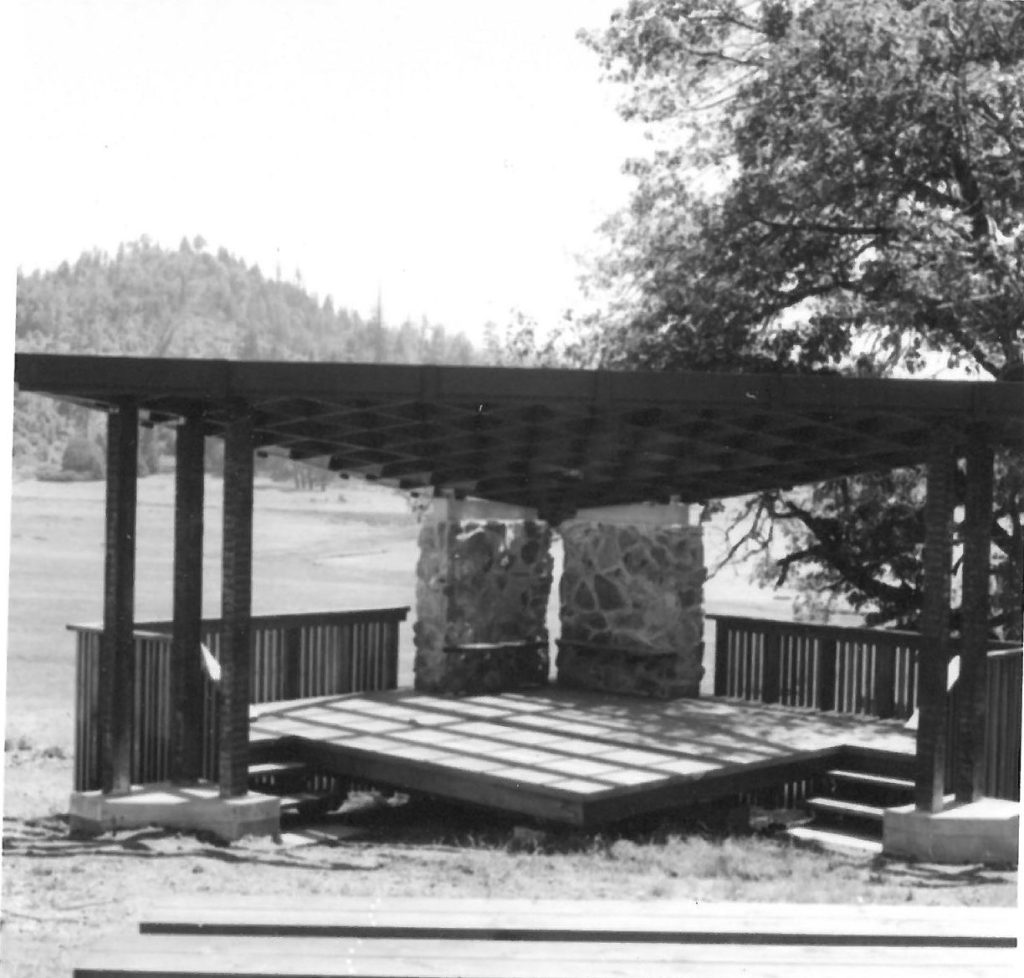
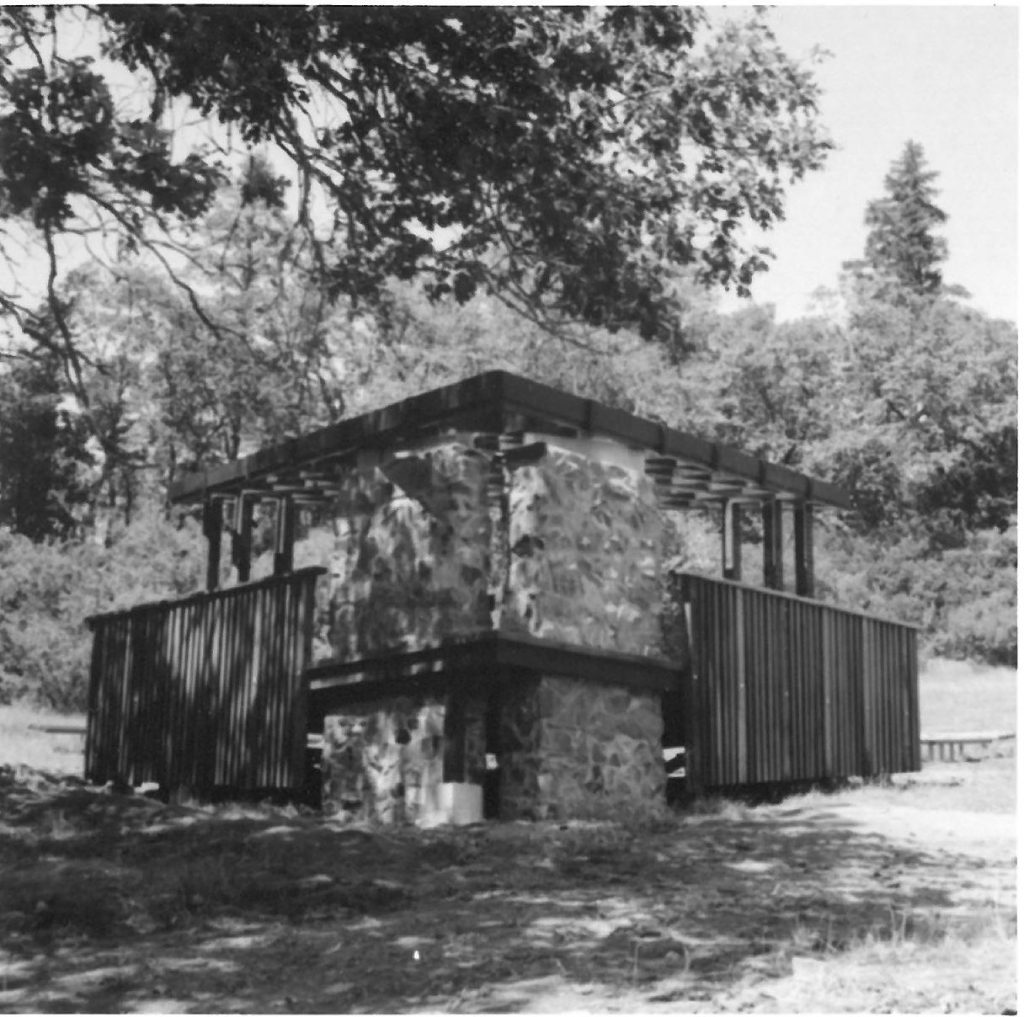
Handicraft Building – 1962 to Present:
This building was constructed in 1962 by the Rotary Club of San Leandro and was the very first building constructed at the Scout Reservation. For almost ten years, this was the activity center of camp where each day Scouts came to the store and commissary to pick up their provisions for meals. The building also was the location where you could purchase your basic necessities for merit badges and Scoutcraft such as rope, twine, sweets, a shot of sarsaparilla (root beer) or get your materials for an apple or peach cobbler.
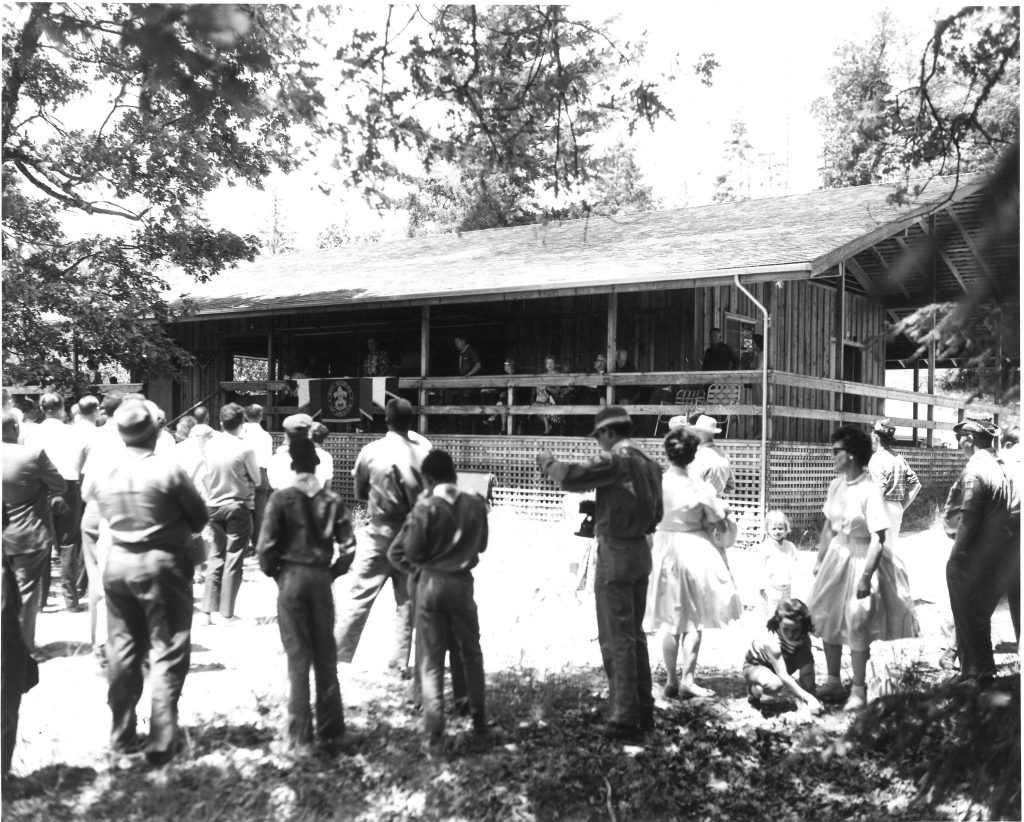
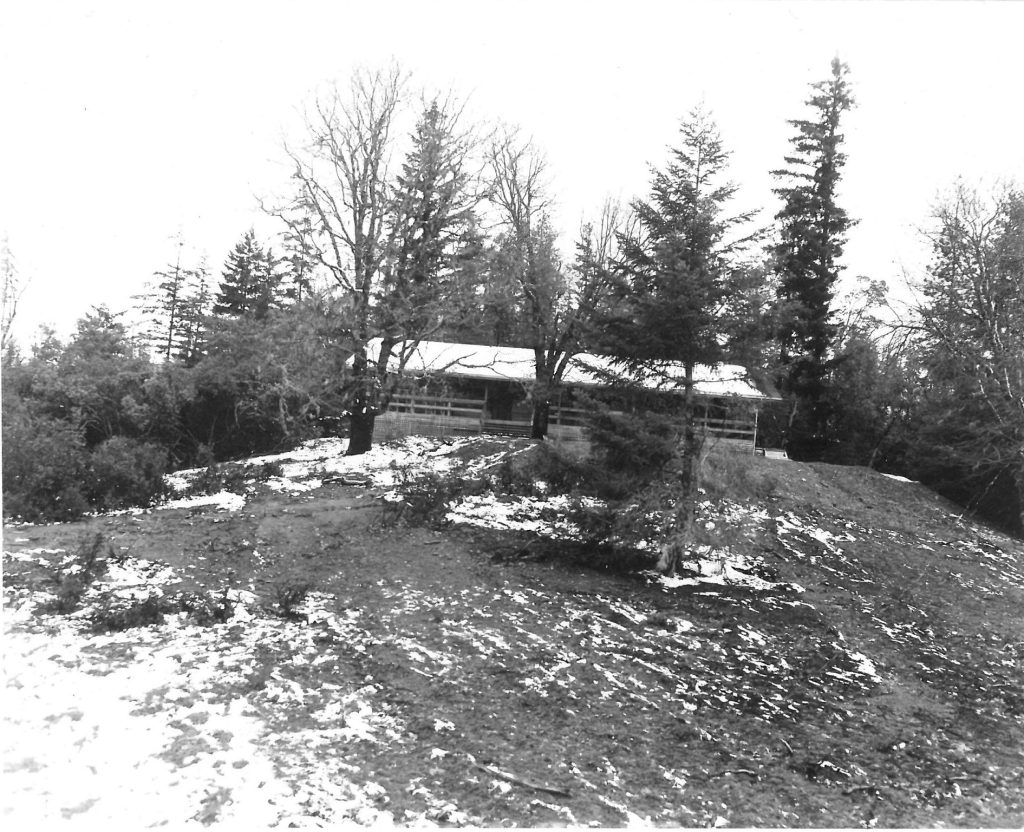
Madrone Showerhouse -1964 to 2008:
The Madrone showerhouse was located in the saddle between the Sky High and Moss Shadows campsites. The showerhouse had two toilets and an outside shower area with four shower heads. It was replaced by the cinder-block showerhouse located across from the handicraft building.
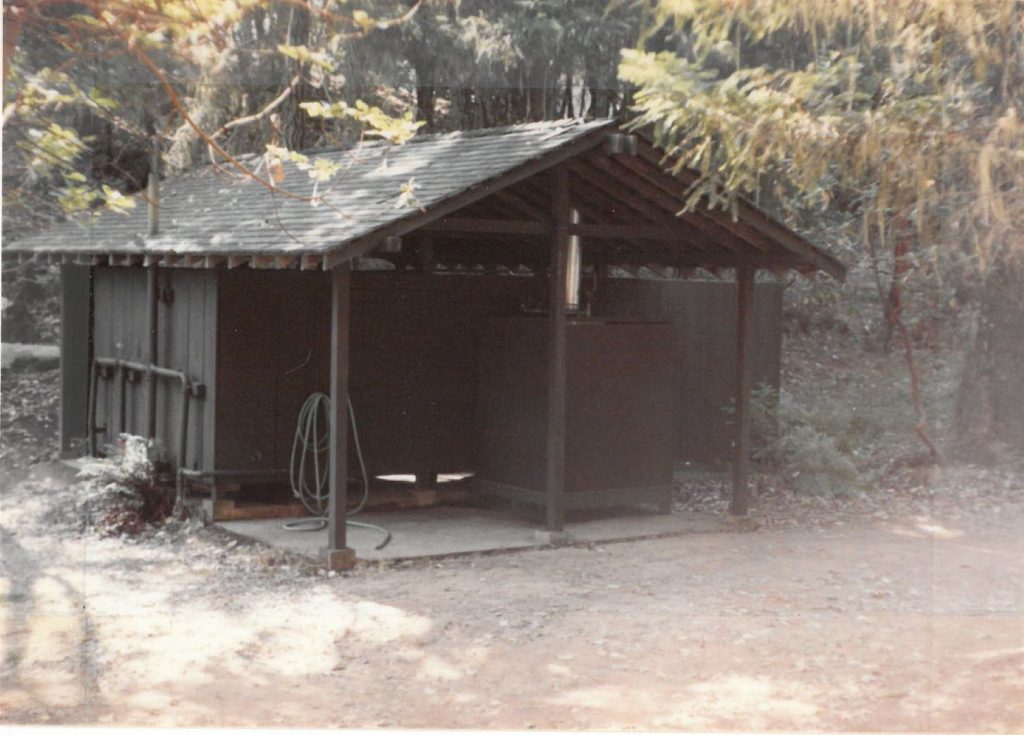
Admin Building / Health Lodge – 1964 to 2008:
The original Admin building was constructed in 1964 with an addition added in 1971. The building consisted of a kitchen, meeting room, two restrooms, an office, medics room and staff showerhouse. The medics room, camp office and showerhouse were added in 1971.
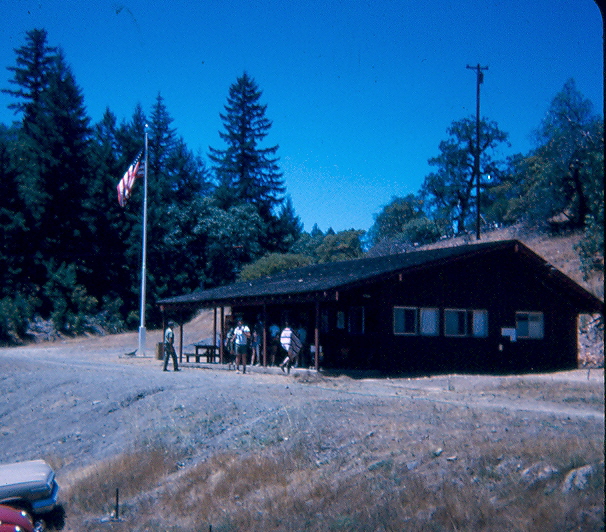
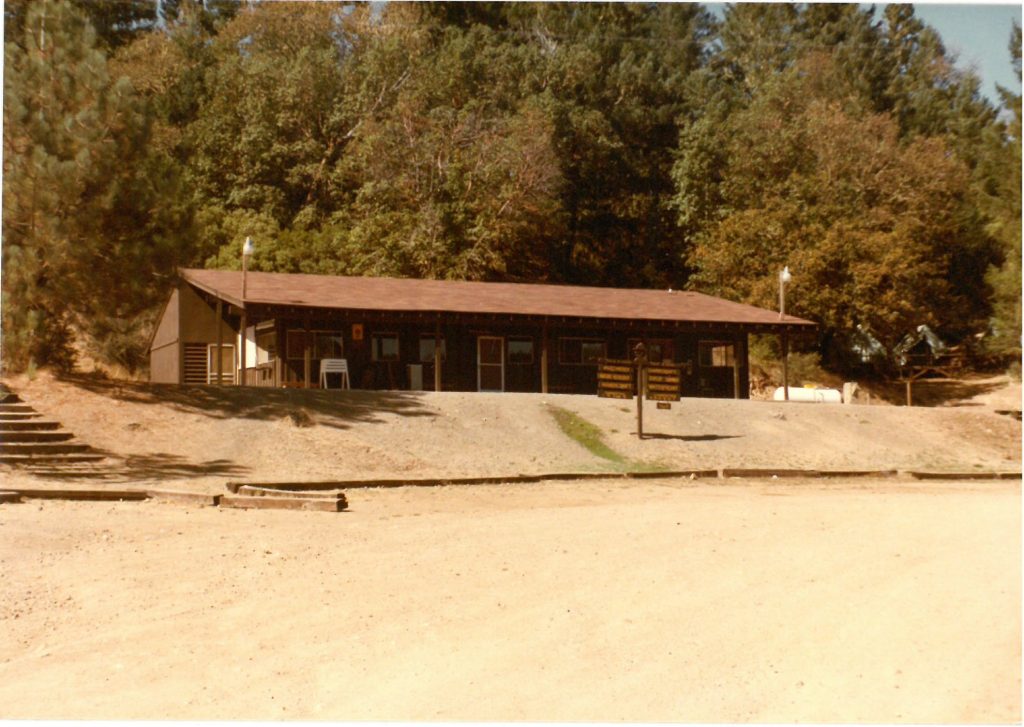
Rifle Range – 1964 to 2015:
The original rifle range was located in the same location as the present day rifle range but with far less amenities. Initially shooting was done either standing or in a prone position by laying on a mattress. There was no water at the old rifle range other than a five gallon jug of water.
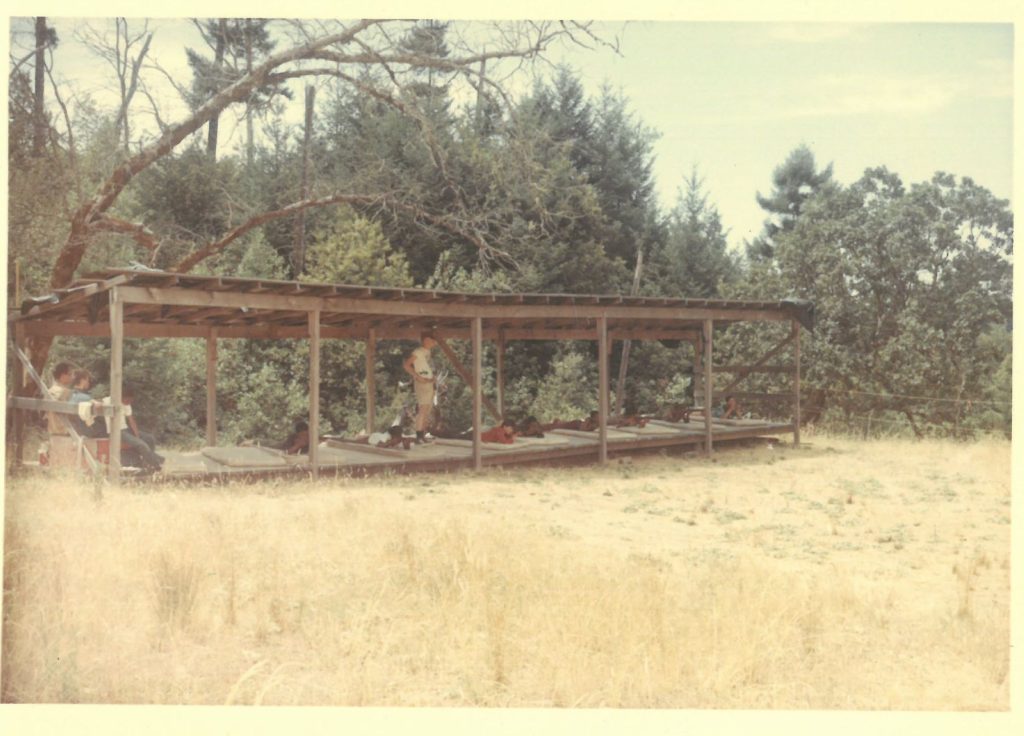
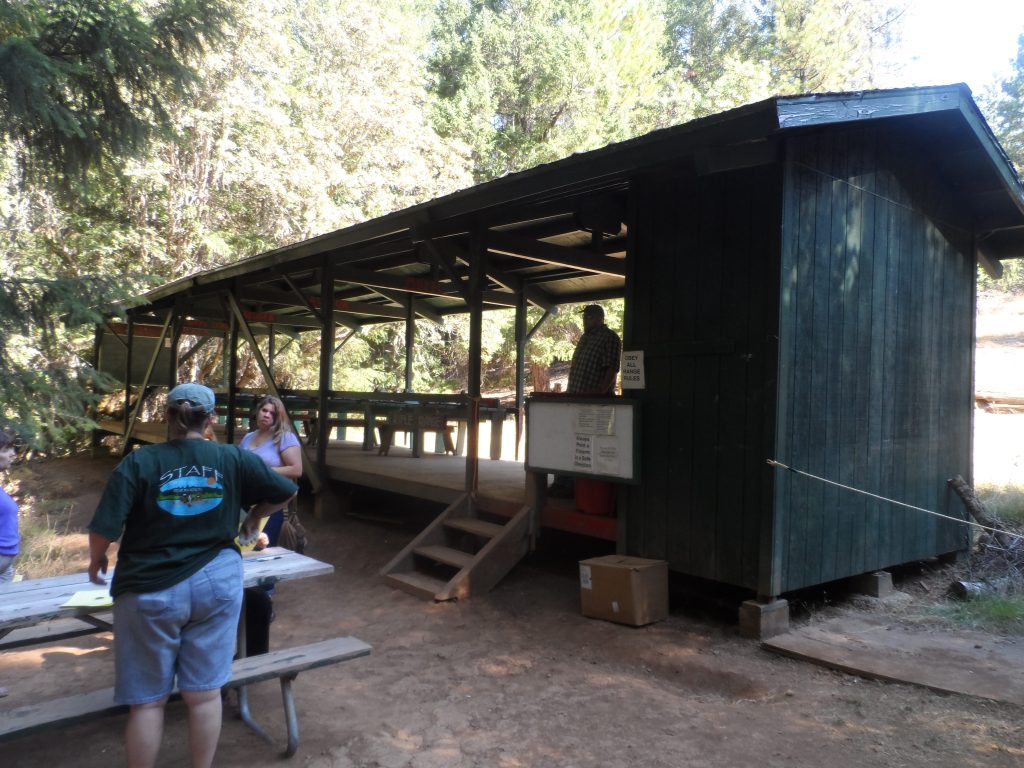
Commissary / Trading Post – 1971 to 1989:
This commissary building and trading post replaced the original commissary which was turned into a storage warehouse. Scouts would pick up their supplies at the commissary for each meal. One end of the building contained two roll up windows that served as the camp trading post. The building was reconfigured into a kitchen and dinning hall in 1989 and continues to be used today
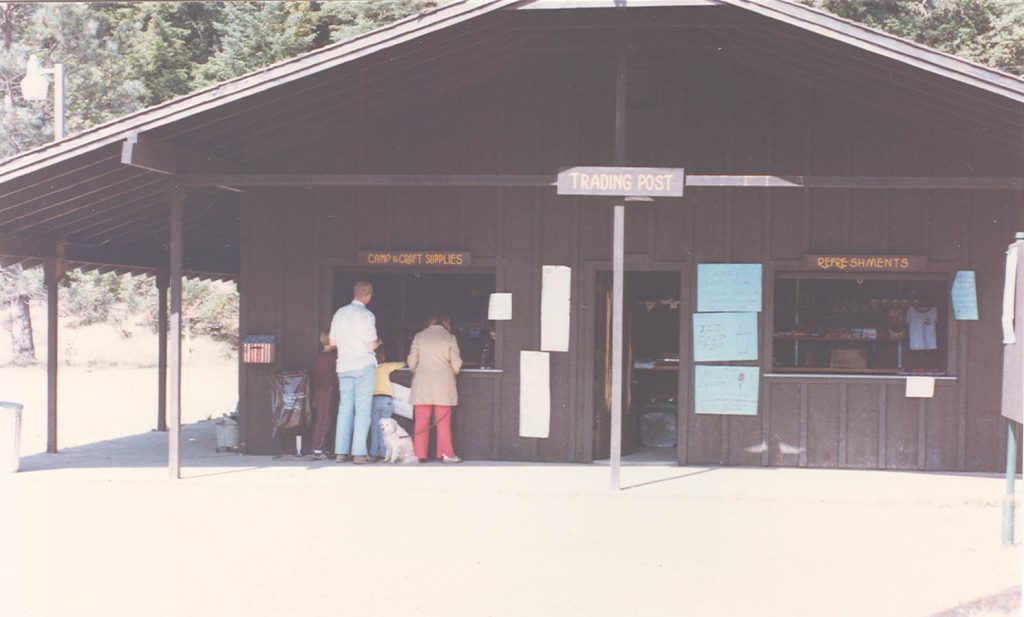
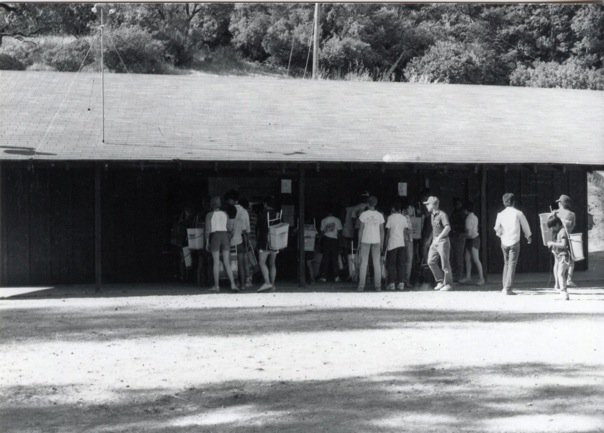
Directors Cabin – 1982 to 2002:
The Directors cabin was a double-wide trailer that was used by the camp director and some of the senior staff. It was located in the field across from the staff showerhouse and adjacent to the original medics cabin (that was burnt down in 1980). It was well known for its poor construction as the floor sagged and numerous animals lived in the walls. The porch was the best part of the cabin as it had a fantastic view of the lake. During construction of the Rangers House, the ranger occupied the Directors cabin for a couple of years.
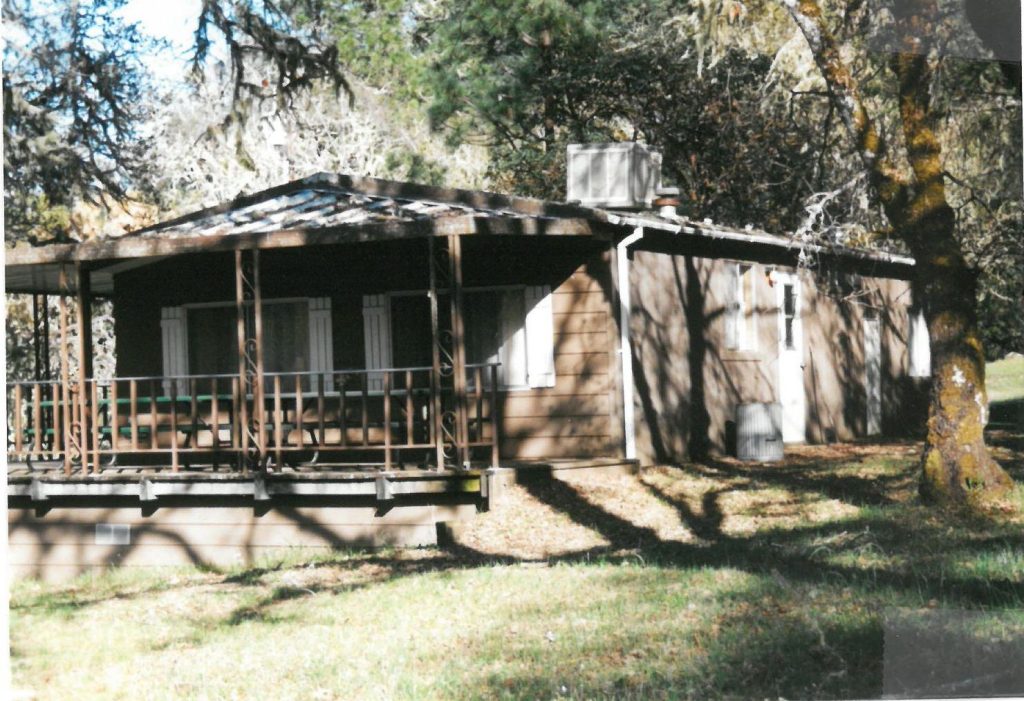
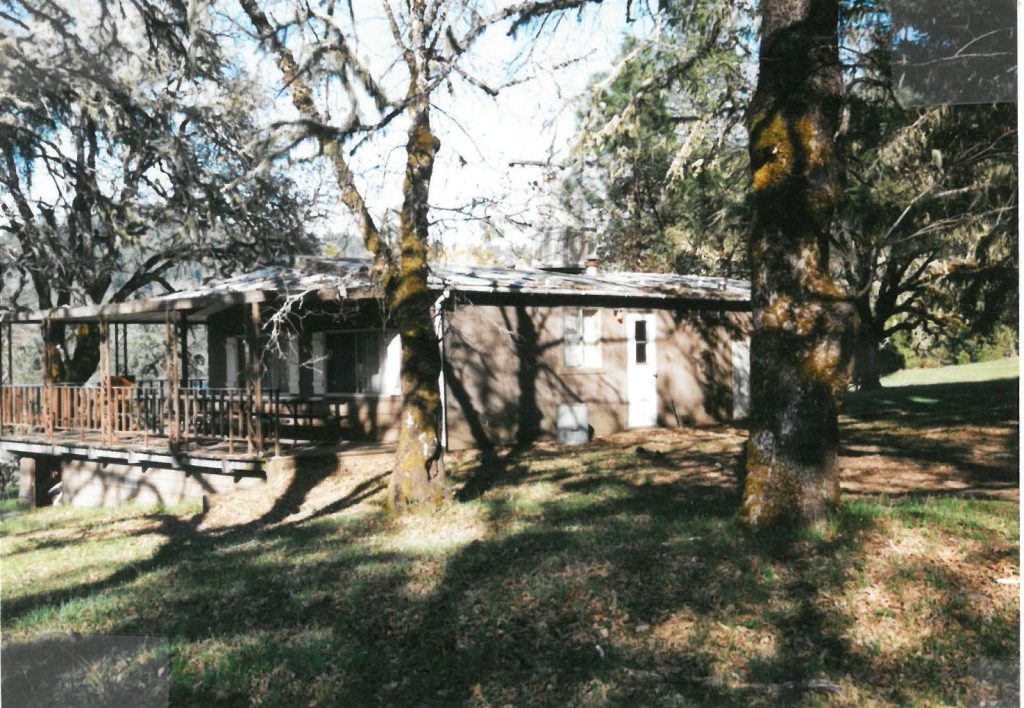
Archery Range – 1964 to 1970:
The original location for the archery range was directly south of the Campfire area in the open grass field. This site was used from the time that the camp opened as a summer camp in 1964 until 1969 when 160 acres of additional land was purchased. In 1970 the Archery range was moved to its current location which also included the Gilwell field area, the mountain biking area and the Oak flat camp grounds. However it was not until 1995 that the shade structure was added. Prior to the shade, the archery range was in a hot open field.
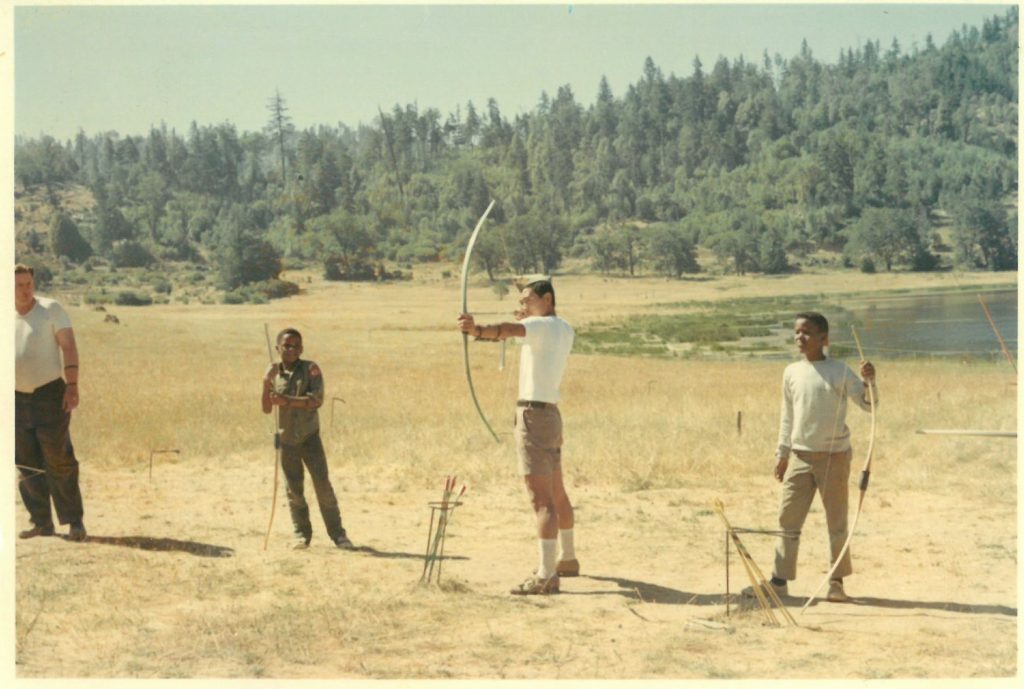
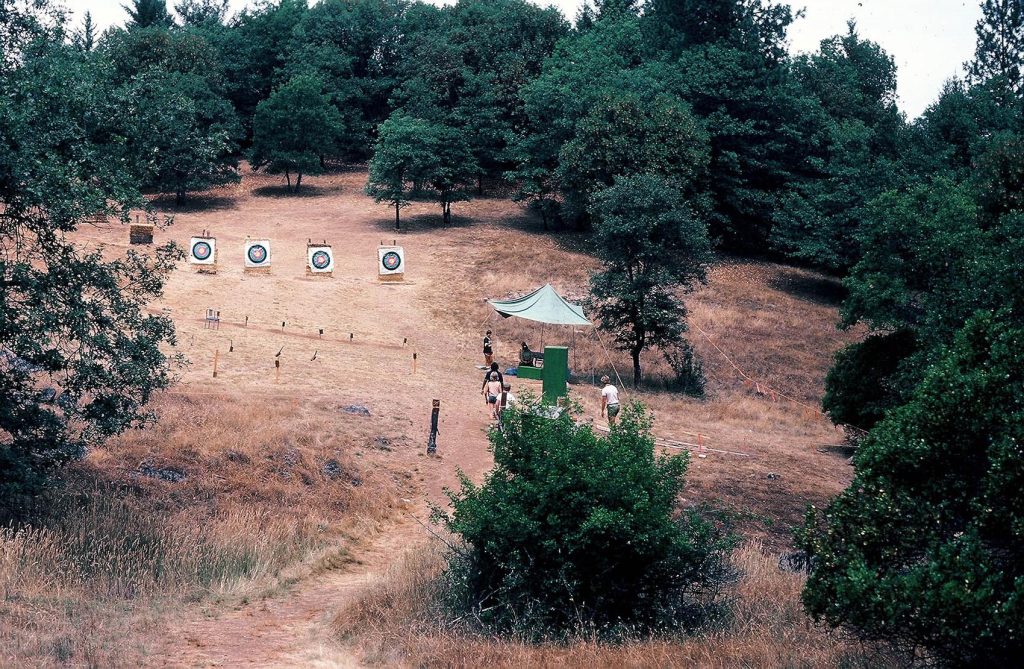
Big Jim – Approx 1600 to 2021:
Big Jim is the name given to our large conifer that has watched over Wente Scout Reservation and the former meadow for over a three centuries. Eagles, Osprey, Owls & Squirrels have called this tall tree home for many a year. A violent windstorm in the early 2000’s knocked off over 30 feet from the top of the tree, but it still stands tall and mighty. Loggers avoided felling the tree with their axes due to the number of knots and imperfections in the wood. Instead they concentrated on the numerous Redwood, Douglas Fir and Ponderosa Pine trees which were in abundance on the slopes of Eagle Summit and Bear Mountain. The tree met its doom however when water rotted out its center core and we were forced to cut the tree down in October 2020.
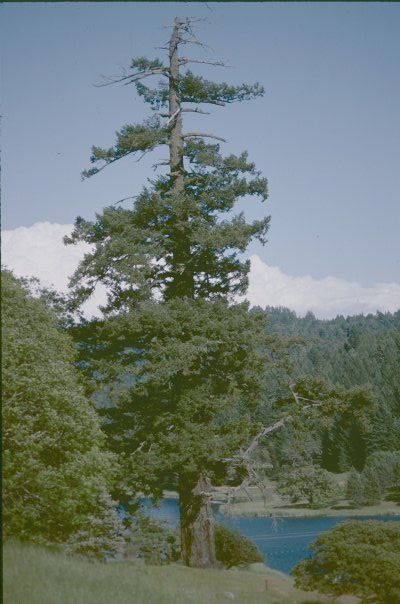
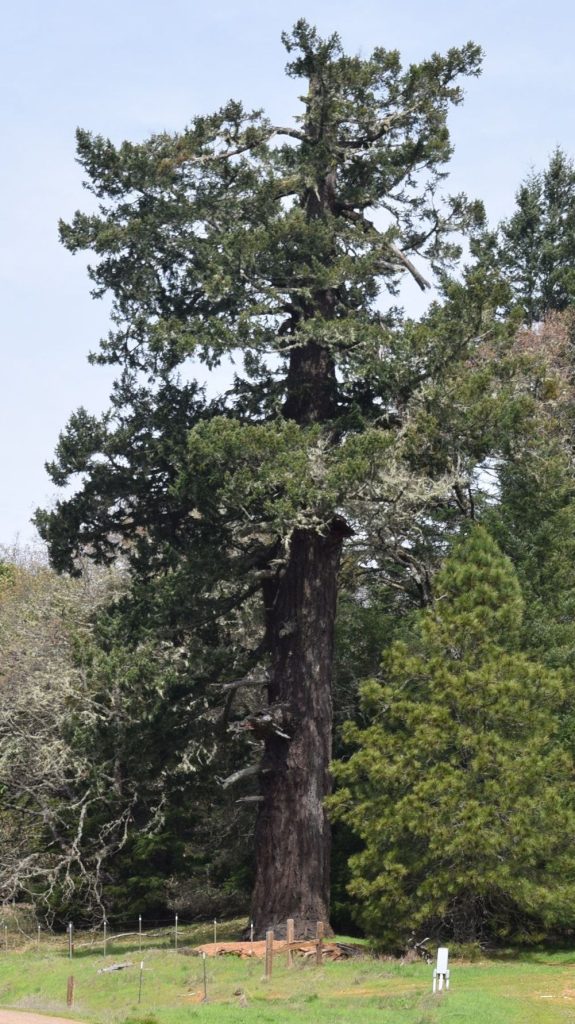
Finbar O’Riley Axe Discover Site:
Location of where the O’Riley double-bladed axe was located in 2019. The O’Riley family would have purchased the axe in San Francisco for their homesteading prior to 1915. Willits City records and topo maps show that a cabin once stood near the site of the outpost horse corral which is very close to the discovery site of the axe. Most likely the axe was used to fell some nearby Ponderosa Pine trees for the building of the O’Riley cabin and the axe was probably placed against a tree at some point and “lost” to the elements
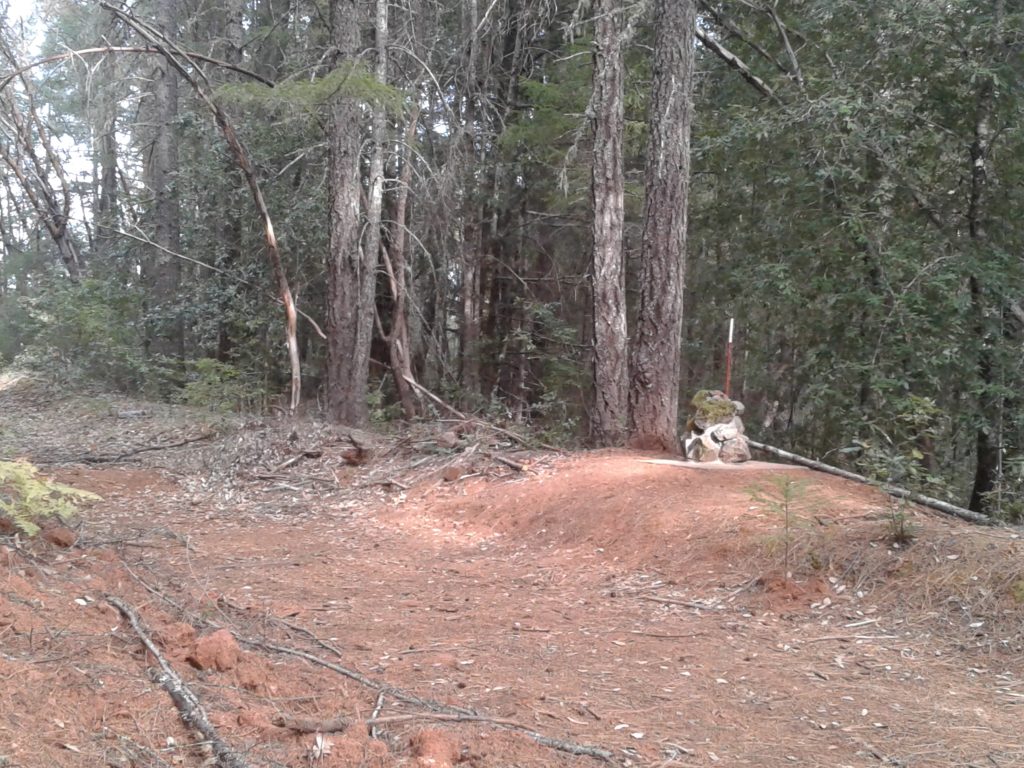
Skid Road:
The old logging trail was once the original road used by the Ohmolt Lumber Company of Finney Valley. Before the dam was built and the creation of the Scout lake, raccoon and deer roamed the former meadow. The Ohmolt Lumber Company and its’ small lumber mill was located below the auxiliary parking lot near the two large oaks which grow at the lake’s edge. Logs were hauled out along this road and down the hill where they crossed a wooden bridge before reaching the old main dirt road to Willits. Redwood, Ponderosa Pine and Fir trees were logged in the hills of our camp as well as near the O’Riley’s homestead site below Eagle Summit
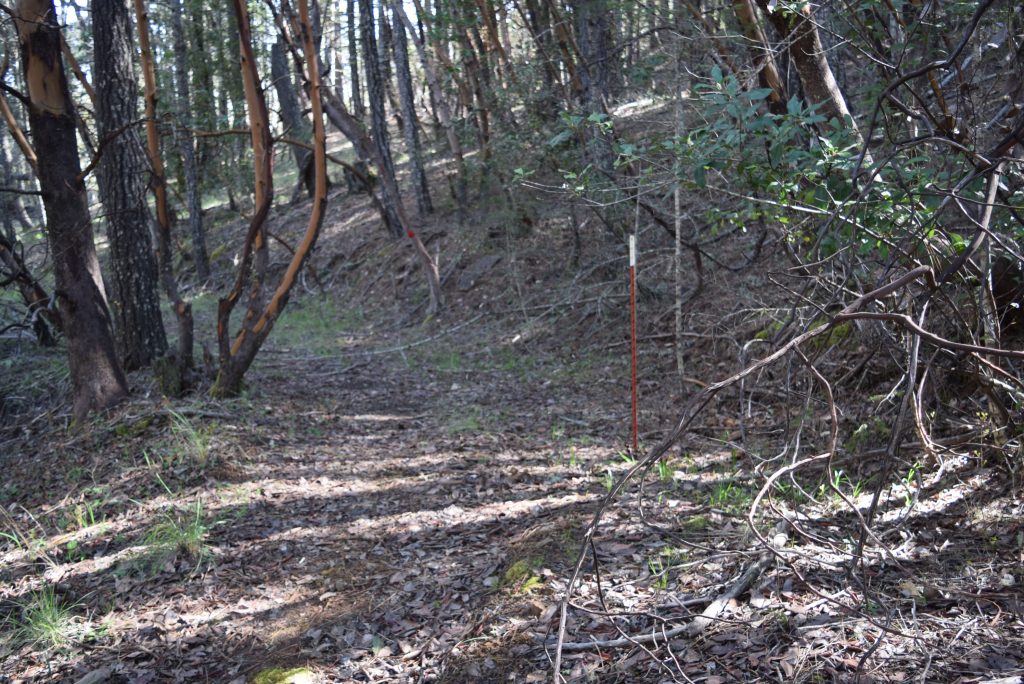
Camp Entrance:
5401 Canyon road has been our address since July 1959. The road into camp has changed little over the years with the exception of the trees that have grown immense over the years. The main road which was once nothing more than a dirt road is now paved and a beautiful entrance sign now graces the front entrance.
